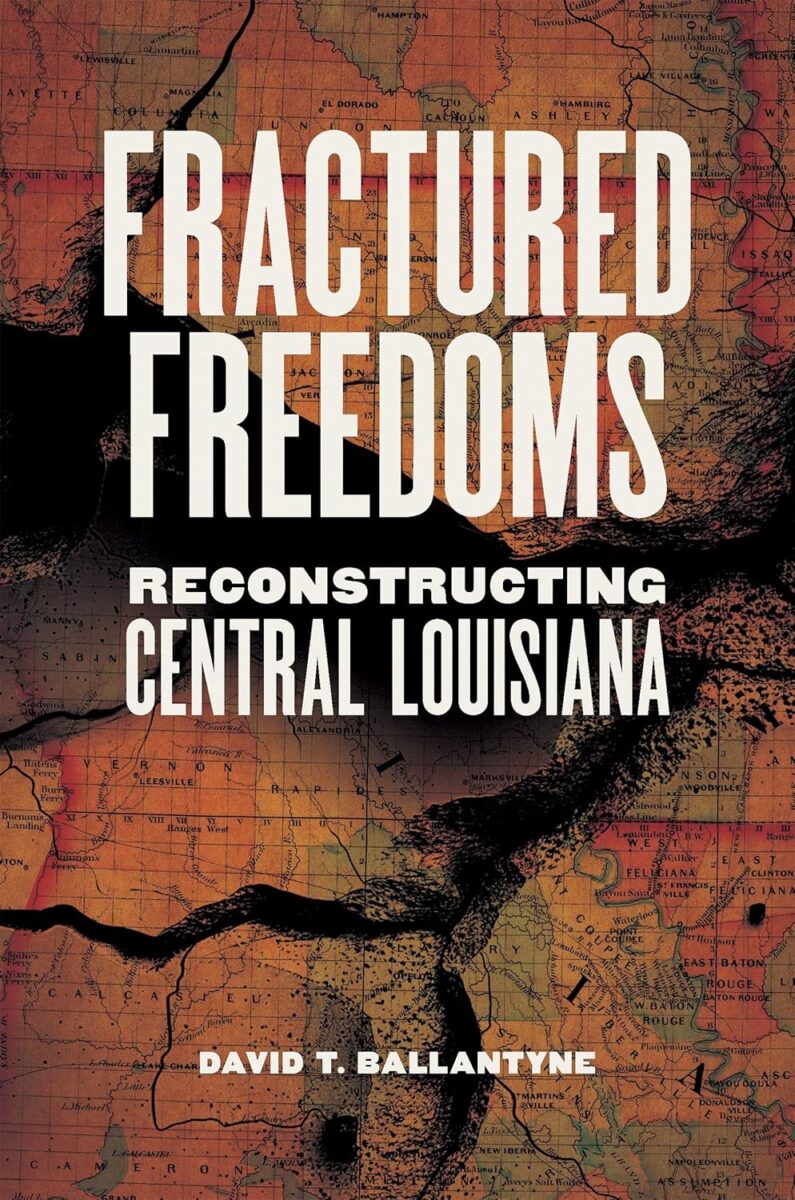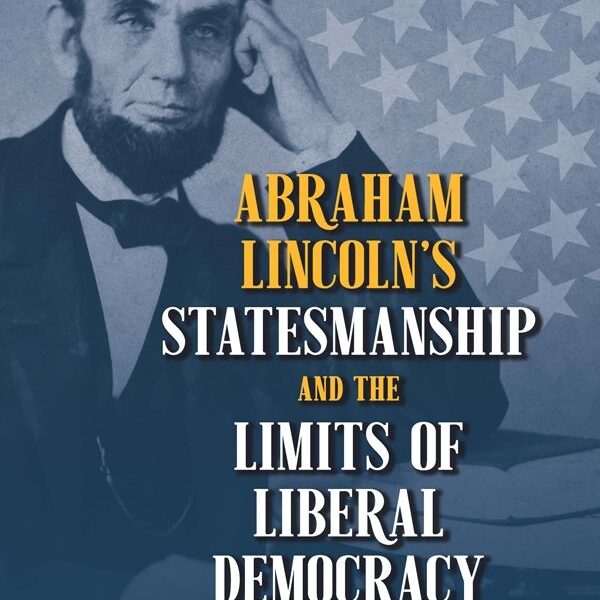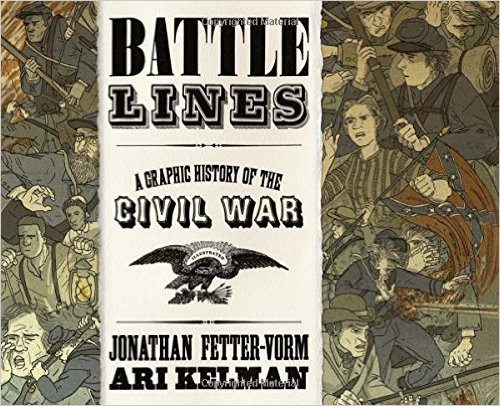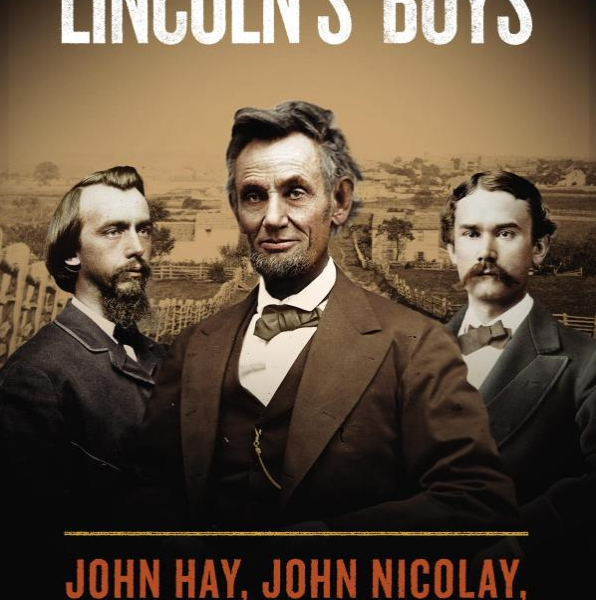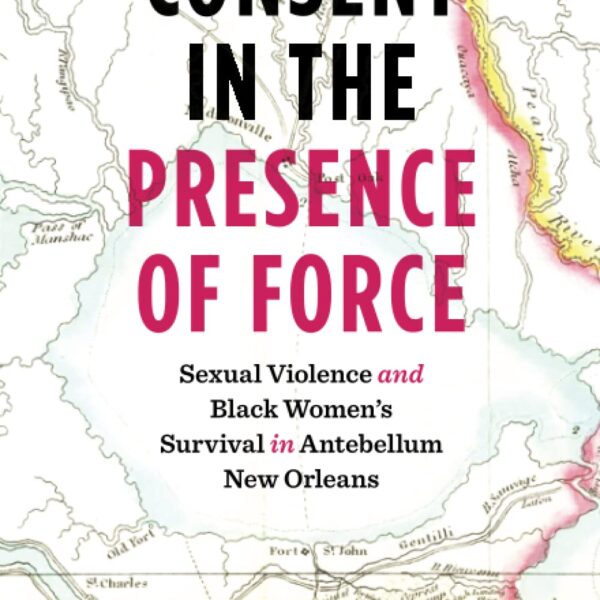David T. Ballantyne’s Fractured Freedoms cautions against reducing the story of Reconstruction to a narrative of inevitable failure. Ballantyne, currently senior lecturer in American history at Keele University, offers a microhistory of the U.S. Civil War era in central Louisiana, specifically Rapides Parish. He explores the viability of Congressional Reconstruction in Louisiana, as well as in the U.S. South more broadly, and examines how Reconstruction unfolded in different ways across central Louisiana. “In many ways a success story,” he asserts, “the central Louisiana experience also highlighted the limits of the possible during Reconstruction in the rural Deep South” (7).
Rapides Parish, like central Louisiana more broadly, experienced significant resistance to immediate secession in 1860 and 1861. Planters claimed to be fully committed to Confederate success, but they often disregarded “measures that would benefit Confederate military imperatives, such as slave impressment and cotton burning” (29). Civilians resisted Confederate conscription and frequently traded across the lines. They also strategically deployed claims of loyalty to best help themselves. As in other regions, rebel authorities attempted to clamp down on dissent. A majority Black parish containing a white population that was lukewarm toward the rebels, resentful of their high-handed efforts, and riven by dissent, might have seemed like it presented good building material for a postwar Republican Party. However, Ballantyne cautions, white racial animosities quickly became a “major stumbling block to attracting white support for a postwar settlement that provided for meaningful Black political, social, or economic freedoms” (45).
Although the demobilization of the U.S. army followed quickly on the heels of the end of the war, the U.S. maintained a military presence in Louisiana. Occupation forces in Alexandria, Ballantyne notes, “provided vital protection to freedpeople seeking a foothold in a postslavery society” (46). Rapides Parish itself, during this period, “served as a qualified success story for the possibilities for pacifying the rural Deep South and fostering a nascent free labor system” (46). African American laborers in Rapides refused to settle for poor contracts during a time of labor scarcity. Ballantyne also charts the rapid spread of schools in the parish. He is careful not to overpaint the picture, but does conclude that, by Louisiana standards, Rapides Parish “experienced a smooth transition from enslaved to free labor” (74). Problematically, as noted above, white attitudes about race continued to hamper the organization and emergence of a Republican majority in Rapides and central Louisiana more broadly. The pressing problem for Rapides Republicans was that they only attracted nominal white support. This was workable in the short term, but “augured poorly for the prospects of a long-lasting Reconstruction settlement protecting Black political, civil, and economic freedoms” (76). The old saying holds that the “enemy of my enemy is my friend.” However, the mere presence of common opponents did not automatically make African Americans and white Unionists in Rapides Parish into friends.
Conservative white people hoped that African Americans would vote with them. When Black voters dashed these hopes, white people turned to violence. Ballantyne comments that violence in Rapides Parish was “far less pervasive than in northwest Louisiana or in St. Landry Parish to the south” (99). Thus, despite fraud, coercion, and violence, he counts the April 1868 election as a qualified success for Rapides Republicans. Military support proved critical in helping Republicans to obtain a foothold in Rapides Parish. After the Alexandria military post closed in March 1869, Republicans consolidated power. Consequently, “against this backdrop of relatively secure Republican parish control, the late 1860s and early 1870s witnessed some economic recovery and signs of African American economic advancement” (113). Again, Ballantyne is careful not to paint too rosy a picture. For example, he remarks that Black access to criminal justice became more concrete, but also that Black jurors hearing criminal cases tended to be rarer than the majority-Black jury pools would seem to indicate. Furthermore, Republicans had not converted many white Louisianans. Party leaders also engaged in factionalism and faced continual charges of hypocrisy and corruption from Democrats.
“Though Black citizens had made incremental economic, social, and political gains in central Louisiana during the brief Republican ascendancy,” Ballantyne comments, “the state party was creaking entering 1873” (137). The aftermath of the tumultuous gubernatorial election of 1872, the vicious Colfax Massacre, and the Battle of Liberty Place all demonstrated that Republicanism was under siege in Louisiana. Still, even in this unpromising political landscape, African Americans continued to make significant gains in education in Rapides Parish. Republicans even carried Rapides in 1876.
Ultimately, Rutherford B. Hayes’s betrayal of Louisiana Republicans in 1877 allowed Democrats to take control of Louisiana. Importantly, Democrats could not destroy Republicanism or Black political power entirely. Indeed, into the 1890s, Rapides Parish was “a haven of Black educational activism, fraternal and benevolence society membership, and Black and white agrarian organizing” (196). The story of Reconstruction in central Louisiana, Ballantyne concludes, “showcases a Black majority with few open white allies who—despite tenacious white opposition to Black freedoms—created a functioning biracial political system for a time in the 1860s and 1870s” (212).
Fractured Freedoms offers a deeply researched and well written microhistory of the U.S. Civil War era in central Louisiana. Ballantyne demonstrates that historians should not approach Reconstruction as a narrative of inevitable failure but instead think of it as a moment fraught with possibilities. In this case, the Black majority in Rapides Parish, with some white allies, created a functioning biracial democracy. Democrats screamed and raged about Black political power in Rapides, but they could not stop the biracial political system until they seized control of the Louisiana state government though paramilitary violence, aided and abetted by Republicans like Rutherford B. Hayes. Anyone interested in the U.S. Civil War Era should read this book and grapple with Ballantyne’s arguments.
Evan C. Rothera is Assistant Professor of History at Sam Houston State University.
